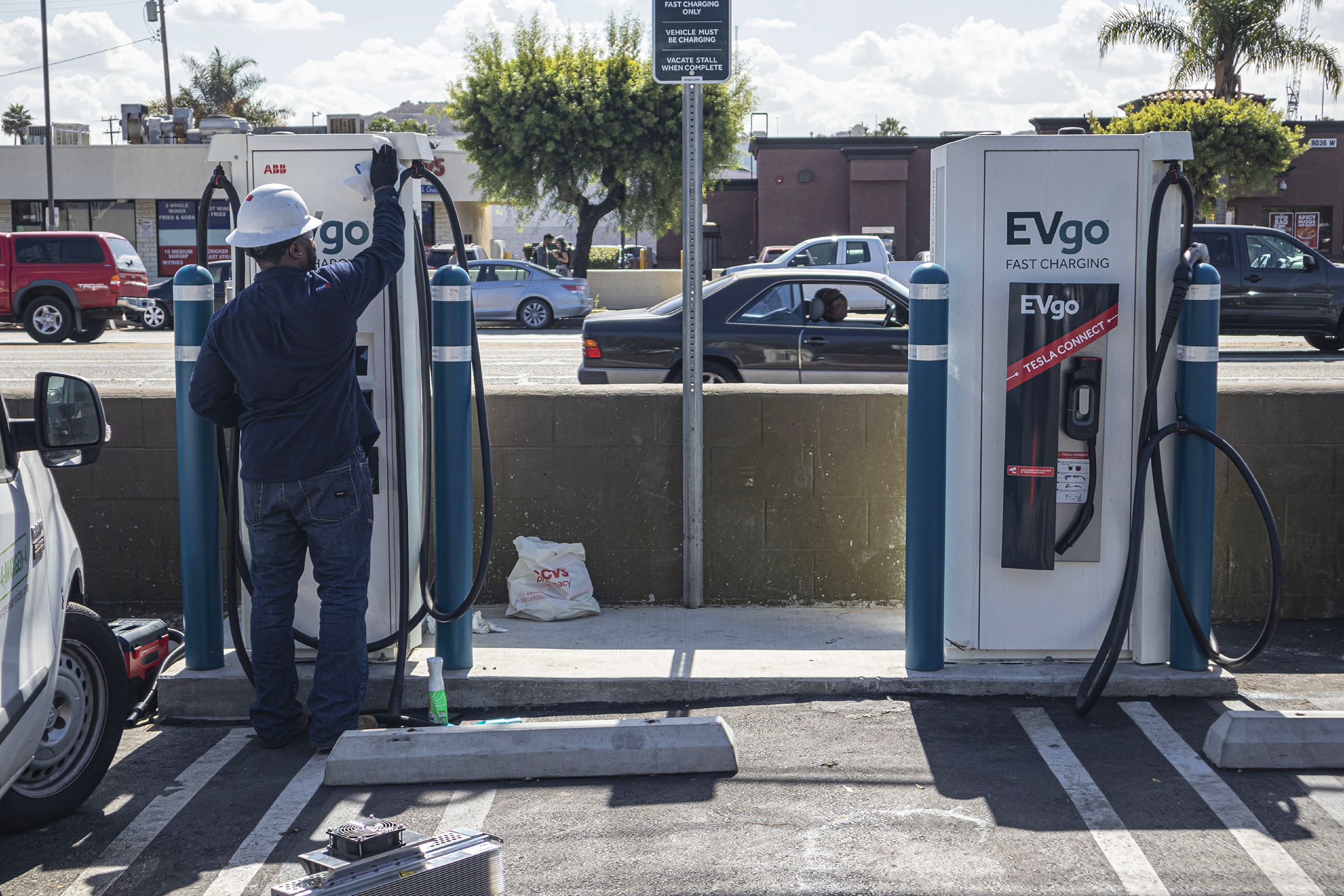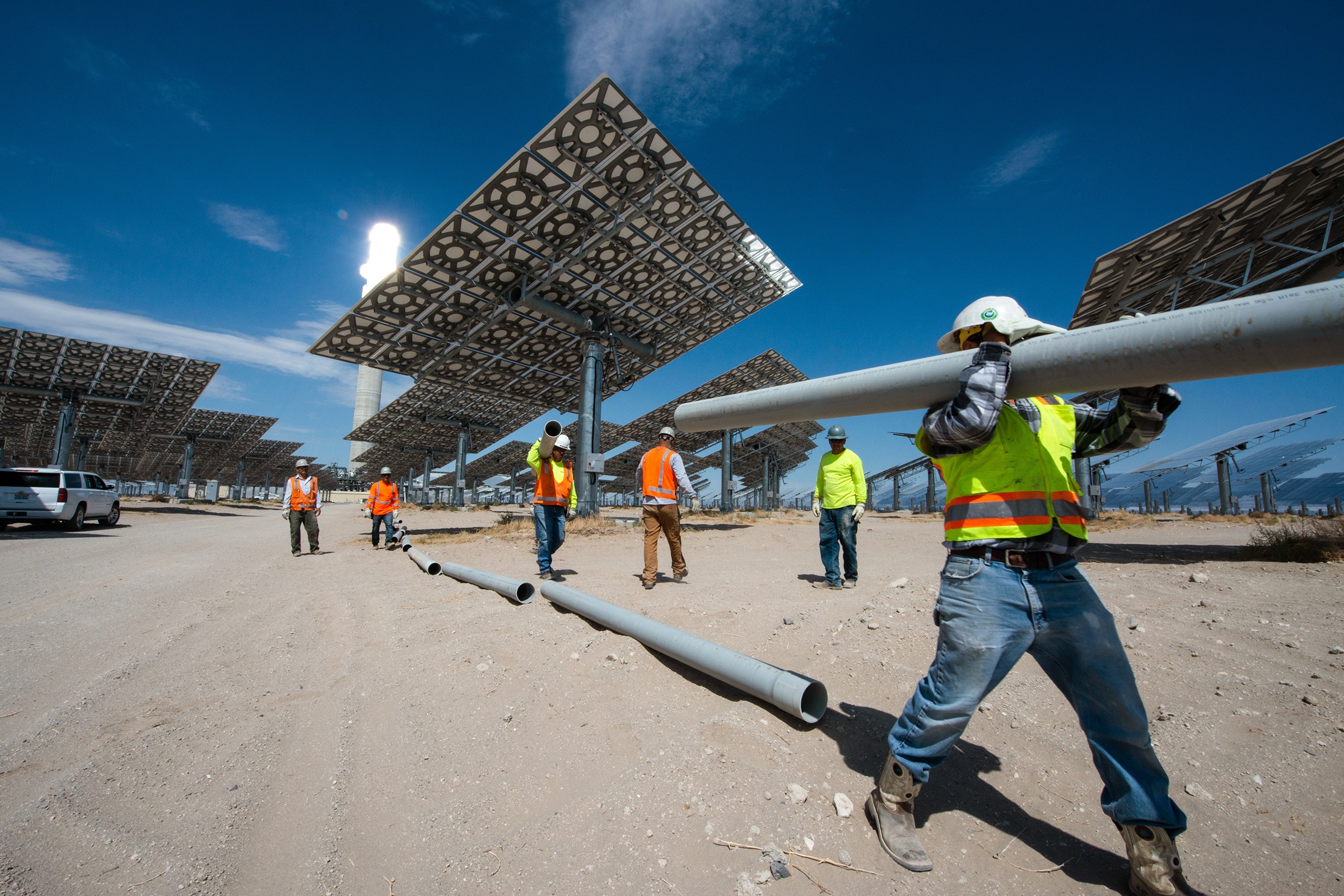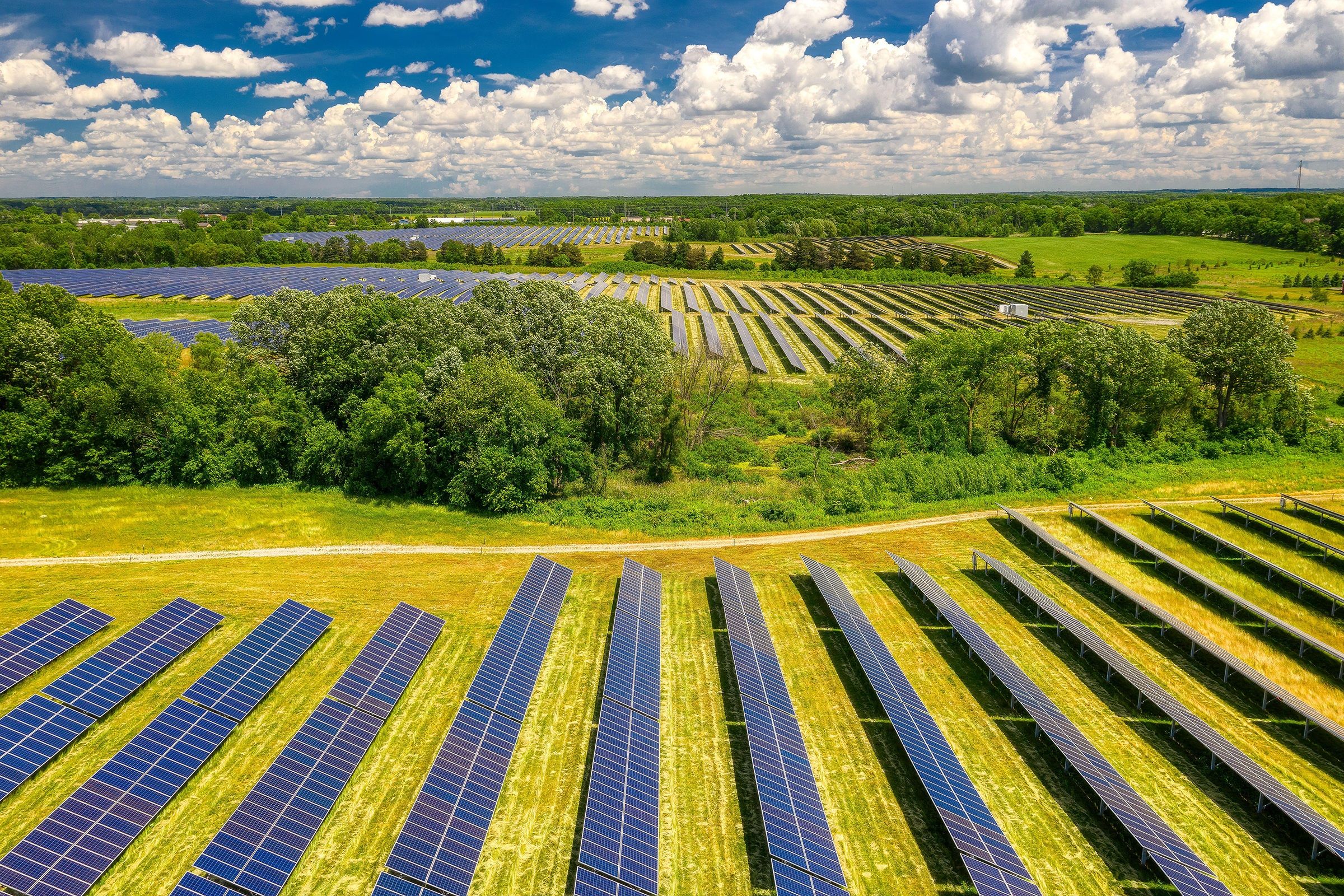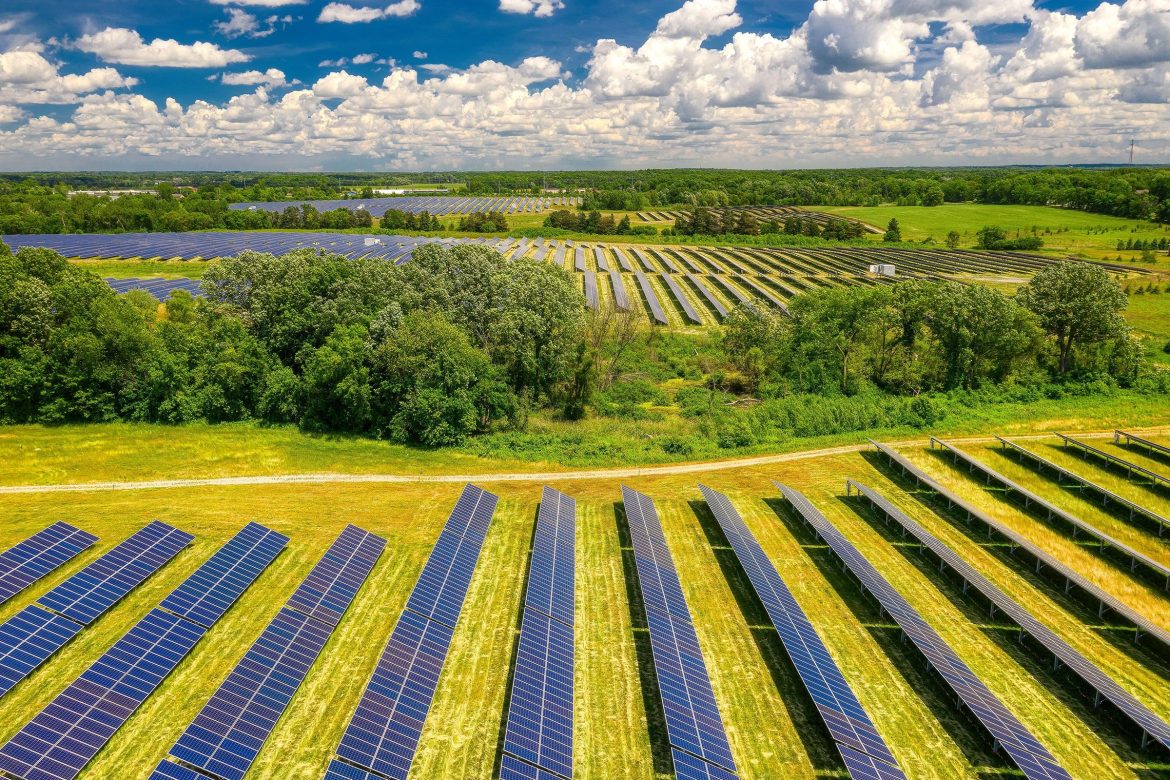The Inflation Reduction Act of 2022 is the strongest congressional climate action yet—in the moment we need it most.
Senate Democrats unveiled a bill on Wednesday, July 27, that provides $369 billion in strategic investment to confront the climate crisis in a way that will strengthen the economy, lower costs for our families, and provide important investments for overburdened communities.
It’s the strongest congressional climate action yet—in the moment we need it most. It will help to create hundreds of thousands of jobs, spur clean energy innovation, and strengthen the domestic manufacturing base. It will position the nation’s workers and businesses for success in the global shift to clean energy. And it will make the country more secure, reducing our reliance on the fossil fuels that enable belligerent petro-states to attack their neighbors.
This bill is a win for our families, our economy, and our future.
Congress must pass it without delay.
Here are answers to 10 key questions about the bill.
What’s the deal?
Formally called the Inflation Reduction Act of 2022, the package is the result of months of negotiations among Senate Democrats. It contains $369 billion, over 10 years, in energy, climate, and justice investments, and $64 billion to reduce prescription drug costs for consumers and otherwise extend health-care benefits under the 2010 Affordable Care Act.
Those provisions are more than paid for through $739 billion in revenue that the bill will raise, again, over 10 years by reforming the way the government pays for prescription drugs, enhancing Internal Revenue Service collections and ensuring that profitable corporations pay their fair share.
On balance, the bill will cut federal deficit spending more than $300 billion over the coming decade, the bill’s sponsors estimate. The measure is being called a budget reconciliation bill, meaning it can pass in the Senate with a 51-vote majority, rather than the 60 votes most legislation requires to overcome a filibuster. A vote could come as early as next week. The Senate should pass it without delay and send it to the House for swift passage there.
What does this mean for climate change?
This is the strongest congressional climate action yet at the moment we need it most.
Millions of Americans are living under heat advisories or warnings, exposed to extreme heat that disproportionately impacts vulnerable populations like the elderly, farmworkers, and Black communities.
The West is baking through its worst drought in 1,200 years. The two largest reservoirs in the nation are three-quarters empty. Catastrophic floods shut down Yellowstone last month, and at least eight people have died in record flooding in Kentucky this week.
Extreme heat is threatening the health of workers on construction sites, farms, highways, and other outdoor locations. And drought and extreme heat are hurting yields and driving up prices for heartland crops and livestock. Cattle were dumped in a Kansas landfill this month after thousands died from heat. Drought and extreme heat are threatening the health of outdoor workers and hammering yields on heartland crops from wheat and corn to tomatoes and beans.
And wildfires have torched enough land this year—nearly twice the annual average—to cover the state of New Jersey, threatening even Yosemite’s giant sequoias and burning enough land in Alaska alone to cover the state of Connecticut.
All of this will get worse, the science tells us, unless we cut the dangerous carbon pollution and other greenhouse gases by at least half by 2030.
Once enacted, this legislation will enable us to cut those emissions by up to 40 percent, compared to 2005 levels, by 2030.

An electric vehicle charging station in Los Angeles
(Citizen of the Planet/Education Images/Universal Images Group via Getty Images)
How does the bill cut emissions?
It provides tens of billions of dollars in tax incentives to clean up the single-largest industrial source of carbon pollution—power plants that burn coal and gas, which account for 25 percent of the nation’s total greenhouse gas emissions.
The bill includes powerful tax incentives to expand the use of wind and solar power. Those renewable sources provided about 12 percent of U.S. electricity generation in 2021. That’s up fourfold since 2011, as the cost of solar power plunged 90 percent and wind power costs fell 70 percent. This bill will speed that growth.
It also includes funding to help cut the carbon footprint of commercial buildings and heavy industries like steel, chemicals, and cement. It provides funding to help homeowners purchase energy-efficient appliances, like heat pumps.
The bill offers a tax credit of up to $7,500 per car to help put electric vehicles—new and used—within reach for low-income and middle-income drivers, saving tens of millions of gallons of gasoline and diesel fuel every day by 2030. It also provides more than $15 billion to enable the federal government to purchase low-carbon industrial materials and clean technologies like electric vehicles for the U.S. Post Office.
There is also support for rural communities: More than $20 billion will go toward helping farmers and landowners adapt to climate change and be a part of the climate solution by advancing practices that, if done right, would help farmers do what they’ve wanted to do all along—fight climate change by using traditional and low-chemical practices. Taken together, these and other measures will cut the nation’s carbon footprint dramatically.
Why is that important?
The United States is the world’s largest cumulative emitter of carbon pollution over time. It’s currently second only to China in annual emissions. We have an obligation to cut that climate pollution at home and help lead the world in cutting global emissions that have already warmed the planet by 1.1 degree Celsius (2 degrees Fahrenheit).
By 2030, in fact, we must cut this climate pollution at home and abroad by at least half, the science tells us, in order to limit global warming to no more than 1.5 degrees Celsius (2.7 degrees Fahrenheit). Warming above that level, scientists warn, would trigger catastrophic storms, floods, wildfires, and other dangerous and costly climate consequences.
That’s why President Biden has pledged to cut U.S. greenhouse gases by 50 to 52 percent, below 2005 levels, by 2030. Enacting this legislation will take us a long way toward reaching that goal.

An attendee examining a map of offshore wind energy developments during the 2022 Mid-Atlantic Sea Grant Regional Meeting held in Ocean City, Maryland.
(Aileen Devlin/Virginia Sea Grant, CC BY-ND 4.0)
What more must be done in Washington to hit the target?
President Biden must make sure our government is part of the climate fix—not the problem. That means using the well-established statutory authority the president already has to write new rules to help clean up our cars, trucks, and dirty power plants; make our homes and workplaces more efficient; cut methane emissions; protect workers from dangerous heat; safeguard the Tongass and other critical primary forests that absorb and store carbon from the atmosphere; and keep investors informed as to corporate climate risk. It means implementing bipartisan infrastructure funding in a way that helps to cut our carbon footprint and confront environmental injustice. And it means doing this in a way that helps to shield the most vulnerable communities from pollution and extreme weather.
If done properly, in concert with the reconciliation package, this comprehensive approach will set us squarely on the path to the emissions reductions required to confront the climate crisis.
What’s in this bill to advance climate justice?
Climate change and rising inequality are interconnected crises. Low-income communities and people of color suffer disproportionately from fossil fuel production and use, and the rising costs and mounting dangers of the climate crisis. The cost of the clean energy transition must not overburden those who can least afford it.
Leaders in the environmental justice community have rightly expressed concern about provisions in this bill that support offshore drilling, nuclear power, logging on public lands, certain kinds of hydrogen development, and a range of other industrial operations that disproportionately impact low-income communities and people of color. There’s work to be done to address these important concerns.
This bill helps create urgently needed opportunities for historically overburdened communities to participate and share in the manifest health, economic, and environmental benefits of clean energy investment. Of the total energy investments in the bill, as much as $60 billion goes toward low-income communities and people of color. This is funding to accelerate clean energy investments, improve the energy efficiency and climate resilience of affordable housing, and reconnect communities severed by misguided highway construction from decades ago. It includes money for air pollution monitoring and buying electric loading equipment in ports as well as low-emission school buses and trucks.
This bill includes $27 billion in the clean energy accelerator and an additional $3 billion in environmental and climate justice block grants to support enhanced community engagement in the planning and implementation of transformative community development and environmental justice projects in disinvested communities.
The bill provides the resources that can allow these communities to chart a course toward a more just, equitable, and sustainable future. It is these frontline voices that matter most in ensuring that the way we respond to the climate crisis can center justice for marginalized communities.

Contractors laying pipe at the Crescent Dunes Solar Thermal Facility, owned by SolarReserve, in Tonapah, Nevada.
(Dennis Schroeder/NREL, 61334)
How will this bill reduce inflation?
It will reduce the federal deficit by lowering energy costs through increasing the supply of energy—including clean renewable power—and saving our families and businesses real money.
The bill will cut federal deficit spending by at least $300 billion over the coming decade, the authors estimate. That, economists explain, helps to hold down inflation.
The bill includes more than $9 billion in direct rebates, in addition to consumer tax credits, to help homeowners pay for rooftop solar panels, heat pumps, electric water heaters, and energy-efficient appliances and home retrofits. And clean power produced by the wind and sun is cheaper across most of the country than electricity generated from fossil fuels.
That all means real savings—8 percent, on average, in household electricity bills by 2030, and more than $13 billion in savings for operators of commercial buildings between now and 2060.
Moreover, reducing energy costs for businesses means less cost passed on to consumers. And, finally, electric vehicles currently run, on average, on the equivalent of $1-a-gallon gasoline. With fewer painful trips to the gas station, demand for oil will fall, driving pump prices down.
How will this legislation strengthen the economy?
The bill includes more than $60 billion to support domestic production of wind turbines, solar panels, and the equipment they rely on to operate, as well as electric cars, advanced batteries, and other components across the entire clean energy supply chain. It increases support for research and development, the seed corn for clean energy innovation. And, by promoting efficiency and clean energy production, it will help make our workers and businesses more competitive in the global market.
The strategic investment in this bill will help to create hundreds of thousands of high-quality jobs, building on a clean energy sector that employs more than 3 million people nationwide. These are jobs in every corner of the country, paying 25 percent more, on average, than the median wage, and more likely to include health care and retirement benefits than the private sector generally.
All told, clean energy will attract some $30 trillion in global investment between now and 2040. That’s the economic play of our lifetime. Building a domestic manufacturing base for the clean energy technologies of the future ensures that U.S. workers and businesses will be winners in the global clean energy sweepstakes.
Finally, when we reduce our dependence on fossil fuels, at home and abroad, we strengthen our nation and make our country more secure by diminishing our reliance on the fuels that pad the war chests of belligerent petro-states, which use oil and gas money to fund aggression against their neighbors.
What about this bill concerns you the most?
This is not the climate bill we would have written. It’s time to break, not deepen, our dependence on fossil fuels and all the damage and danger they bring.
And certainly it’s unfortunate to see renewable energy development on public lands and federal ocean waters become artificially intertwined with aggressive new oil and gas leasing mandates. It makes no sense to slow renewable energy progress while locking us into decades’ more dependence on the fossil fuels that are driving the climate crisis. At the same time, we can’t lose sight of the larger impact of this legislation, as a package.
What’s the bottom line?
From a climate perspective, this package will position the country to cut carbon pollution and other greenhouse gas emissions at least 40 percent, below 2005 levels, by 2030. Here’s the breakdown.
NRDC’s early analysis shows that this package, once enacted, could cut emissions by roughly 10 percentage points. U.S. emissions are already down about 17 percent since 2005. Further declines were already expected to bring reductions to 30 percent by the end of this decade, due to existing state and federal policies and the improving economics of clean energy and vehicles.
Combined, this means that the passage of this bill positions the country to achieve at least a 40 percent reduction, below 2005 levels, by 2030. Future action, like new rules, standards, and policies at the federal and state levels, could build on this success and help us reach the 50 to 52 percent reduction target set by the Biden administration.
This blog post originally appeared on NRDC.org.


